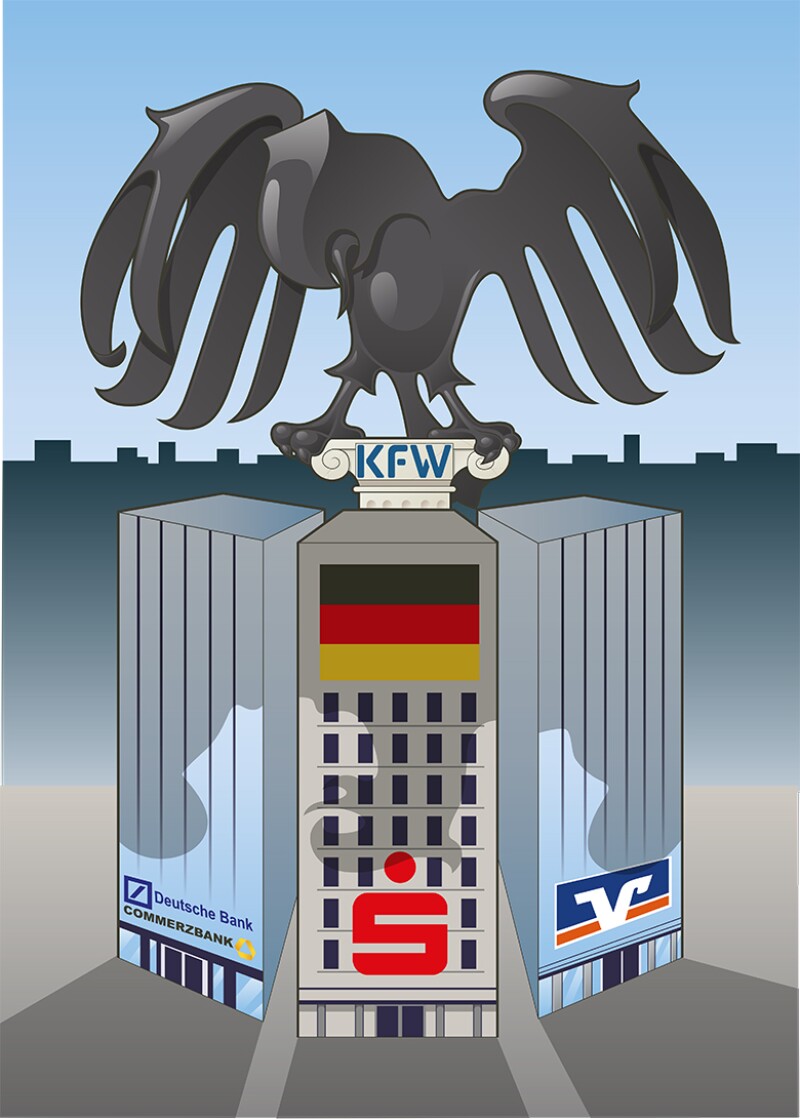
Illustration: Kevin February
IN ADDITION |
|
When in 1948 the US and British occupation authorities in Germany were squabbling over how much to enfeeble the banking sector that had financed the Third Reich, they eventually reached a compromise that endures to this day.
To complement the heavily decentralized commercial and central banking sectors in ‘Bizonia’, as their jointly run territory was informally called, would be an institution that could provide desperately needed longer-term credit to rebuild Germany.
Sir Eric Coates, finance chief of the British military government, proposed a ‘Reconstruction Loan Corporation’ – so named by him to remind the firmly decentralizing Americans he was haggling with of their own government’s nationwide Reconstruction Finance Corporation. It was to be a “capital distribution agency” rather than a bank; and one with a legally restricted borrowing limit.
The KfW Law, passed in November 1948 after much to-ing and fro-ing among the occupiers and with the occupied, stipulated an institution that was not to take deposits or have branches and was to distribute funds via other credit institutions, where they themselves “are not in a position to provide the required means”.